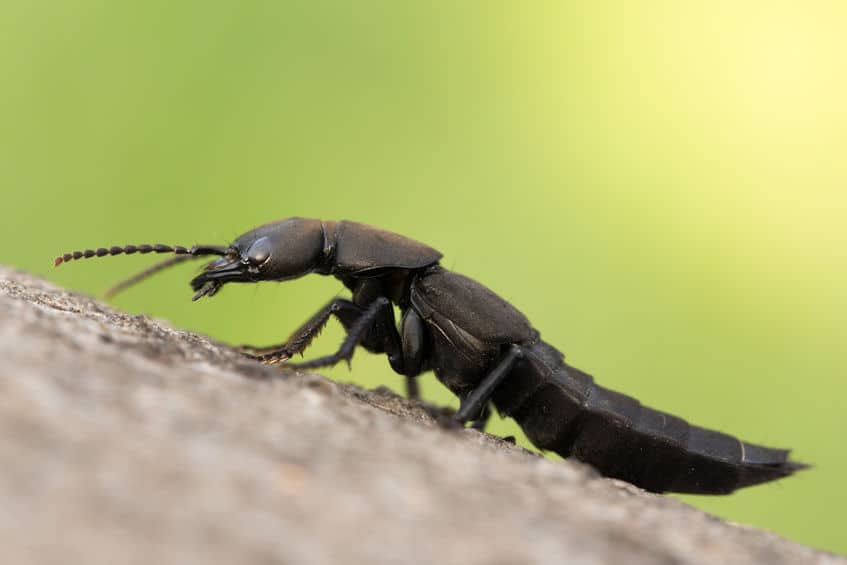The devil’s coach-horse beetle, Ocypus olens, are found cross Europe and North America. They are a type of rove beetle.
How did the devil’s coach horse beetle get its name?
Since the Middle Ages, the devil’s coach horse beetle has been considered a sign of evil. Because of its threatening physical presence and fully dark body – the insect was associated with darkness. Many were frightened when the beetle would point its body in their direction as they thought it was directing a curse. In Ireland, some even thought that it would strike them dead on sight. Not to mention, eat anybody who had knowingly sinned. The devil of course was depicted as using these beetles in place of horses to power his coach.

What do devil’s coach horse beetles eat?
They eat other invertebrates. The Devil’s Coach Horse Beetle is unlike many other beetles in terms of their diet. Instead of eating dead or decaying wood, these beetles eat other insects that make them even more frightening in their respective beetle families. The creature inherits a diet of predominantly worms, slugs, caterpillars, woodlice, and spiders. It is absolutely relentless on the hunt, using its quick movement to catch its prey and strong jaws to devour it. The beetle is considered quite a powerful predator amongst the insect universe.
Are devil’s coach horse beetles dangerous?
They are not dangerous to people but can have a powerful bite. When threatened, they take the stature of a scorpion. This beetle looks very threatening when it perceives another threat. When provoked, the Devil’s Coach Horse Beetle will raise its abdomen and open its jaws. It very much resembles the positioning of a scorpion, often being mistaken for one. The insect will not spit any venom and doesn’t have any protective toxins – but its bite is powerful. It is advised to stay away if the beetle is posturing for an attack. Should you be bitten by the Devil’s Coach Horse Beetle, it will result in a painful injury.
Where can the devil’s coach horse beetle be found?
They can be found all over the world. There are not many places where you will not be able to find a devil’s coach horse beetle. The typical habitats of the insect are damp conditions in woodlands, moorlands, parks, and gardens. They are widespread throughout Europe, Northern Africa, the Americas, and Australasia. The creatures are usually seen under stones, logs, or piles of leaves during the day. The beetles do have small wings, but they are very rarely seen in the air.
Do devil’s coach horse beetles lay eggs?
The Devil’s Coach Horse Beetle will find their mates and reproduce in the autumn, where the female will only lay one single egg. This contrasts with other beetles and insects that will lay multiple eggs after they find a suitable mate. The eggs will split into many larvae after about a month, though. They will develop underground and mature into adulthood after about 150 days. Even in its early days, the devil’s coach horse beetle still looks like a menace adopting that scorpion-esque pose.
Do devil’s coach horse beetles smell bad?
There is one very unique trait about the devil’s coach horse beetle. That would be that they emit an awful smell when they are threatened. This is the insects’ defense mechanism, coming from the pair of white glands at the end of its abdomen. The odor itself is not harmful, but you certainly would not want to be around it when the insect gives it off.
